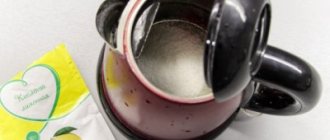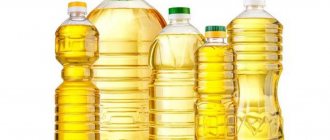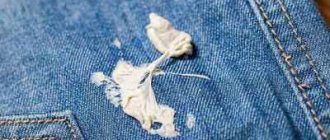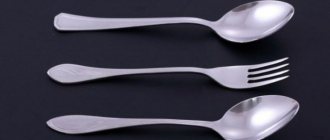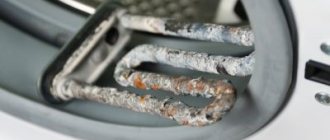Scale and rust in a kettle are a phenomenon that absolutely everyone who uses this kitchen creature encounters. They appear due to the high content of salts and minerals in tap water. Even if you use purchased water, you cannot get rid of this problem. Therefore, it is not surprising that many are interested in how to clean a stainless steel kettle from scale?
Lime in the kettle
What is scale and why is it harmful?
The sediment formed during boiling can have a different composition. It depends on the water that is used. The composition may include organic and inorganic impurities, sulfates, silicates, carbonates. Scale is a set of chemical compounds that negatively affect both equipment and the body:
- Negative impact on equipment. The rate of layer growth depends entirely on the liquid used, the quality of the surface and the heating element. Immediately after purchasing new equipment, the rate of deposit formation is low, but after several rough cleanings of the surface using aggressive agents, it increases significantly. Formations negatively affect the boiling speed, more energy is consumed. Limescale can also lead to overheating and burning of equipment.
- Harm to health. The emerging layer contains many different elements. Despite the fact that our body needs them, we need to consume them in the required quantity. Drinking water from a kettle with a large layer of scale leads to oversaturation of the body with certain elements. This is fraught with clogging of blood vessels and the deposition of kidney stones. In addition, porous surfaces are an ideal breeding ground for various harmful bacteria.
All this indicates that it is necessary to carefully and regularly clean surfaces from accumulations of deposits. However, it must be correct and not harm the heating elements and surfaces.
Cleaning products
Causes of plaque formation
Scale is a hardened deposit that covers the bottom and walls of the kettle during long-term use. It is formed due to salts in the water. The scale layer may vary in color. The shade depends on the composition of the water.
- White-yellow. Indicates calcium-magnesium plaque.
- Bright white. Characterizes the high content of chlorine in tap water.
- Red tint. Indicates the predominance of iron.
Scale must be removed not only for fear of the development of pathogenic microorganisms. The thick layer formed inside the kettle causes the boiling to slow down. And if this does not harm ordinary dishes, then electrical appliances designed for a certain boiling time begin to wear out. This leads to their rapid failure.
Anti-scale products
Anti-scale products
The modern market offers many different products that effectively combat this problem. However, their price is not always justified. Therefore, many housewives are looking for an alternative to such products. Among the most popular, it is necessary to highlight several:
- lemon acid;
- vinegar;
- brine;
- potato peelings;
- soda;
- Pepsi or Coca-Cola.
But not all of these folk remedies are effective and can quickly deal with scale. Let's look at how to effectively clean a stainless steel kettle using folk remedies that every housewife can find in her home.
How to Clean Effectively
Chemicals that are safe to use
Glutoclean
If you want to clean the kettle, you can consider washing powder and other detergents. In the store you will find liquid Glutoclean on the counter. It does not irritate the respiratory tract or eyes; you can work without gloves. The recipe is simple, you just need to apply a little product on a cotton swab and clean it.
The FINISH cleaner is being considered as a substitute. It is sold in 250 ml packs and is also liquid. FINISH fights salt deposits and additionally removes fat. No harm is done to the metal surface. Additional advantages include the absence of a pungent odor; it is washed off without problems.
Interesting! In addition to metal, the product will also clean glass and plastic.
The substance is unique because it contains active substances. Additionally, it is possible to combat unpleasant odors. After use, it is recommended to rinse the kettle well and wipe it with a dry cloth.
If you go through laundry detergents, Calgon is used. It is sold at an affordable price; there is no need to look for substitutes. In terms of dosage, it is recommended to use portions of 25-30 grams. The container is simply filled with water and then you have to work a little with a brush or napkin. The scale is removed after the first procedure.
Calgon powder
If we talk about the composition, it contains zeolites, endogenous substances and carboxylic acids. The washing powder is universal, suitable for various types of surfaces. The product is phosphate-free, so it does not harm human health.
A Dutch manufacturer produces HG cleaner in liquid form. The basis is citric acid plus water. 500 ml products are considered common. The method of application is extremely simple; you will need 75 ml of solution and approximately 700 ml of water. The liquid is poured into the kettle and left for about 10 minutes. There is no need to rub the bottom or walls, citric acid will do everything itself.
If you are considering additional phosphate-free products, it is recommended that you do not pass by Astonish products. It is suitable for cleaning teapots made of metal and stainless steel. Where vinegar and citric acid cannot cope, you can safely take this concentrate. It targets scale exclusively and is easy to use.
In terms of dosage, it is necessary to take into account the capacity of the kettle. If you use a 30 ml cap, you will need half a liter of water. This mixture must be poured into a kettle and rubbed over problem areas. Among other features, there is no odor. The product will get rid of limescale and fights calcium and mineral deposits.
If you consider economical means, you can get Tiret products in stores. This is a Russian manufacturer that has been on the market for a long time. The peculiarity of this cleaner is the use of citric acid. Active substances are used as a basis and there are no additives. Despite this, it is recommended to work with gloves; the product does not allow high temperatures.
The smell is quite tolerable, a fragrance is provided. If you look at the packaging, the descaling product is sold in containers of 250-500 ml. The temperature range is indicated on the product; you need to pay attention to the expiration date. As for application, you need to take a capful of liquid, add 500 ml of water and boil for about 3 minutes.
Citric acid anti-scale
Citric acid against scale
Citric acid is the most effective, but aggressive method for descaling a kettle. With its help, you can quickly remove even the most stubborn formations. In order to start cleaning, you need to take citric acid, its amount depends entirely on the degree of scale. You need to take two bags of citric acid and pour them inside. Then add enough water to cover all the dirt. The kettle should be boiled several times with a break of a couple of minutes. All deposits will dissolve in water. After cleaning, you need to rinse the kettle with detergent and pour water into it so that it is full and put it to boil. This cleaning product is equally effective for both electric and gas-fired kettles.
Important! After such cleaning, the kettle must be rinsed thoroughly and boiled several times so that no acid particles remain in it.
Helpful information
A stainless steel kettle is a durable device, but if not properly cared for, even it can be damaged. To prevent this from happening, you need to adhere to the following recommendations:
Do not use a hard wire brush to remove limescale. Do not try to scrape off scale with a knife or other sharp tools.- When using professional cleaners, strictly follow the instructions. Do not leave them in the appliance longer than indicated on the packaging.
- Do not attempt to remove scale using caustic acids.
After completing the processing, be sure to boil the kettle using clean water. You can't drink it. The first liquid must be drained.
You will find a lot of useful information about descaling here.
Cleaning with vinegar
Table vinegar is also an effective remedy. Many people write that you can use both apple juice and regular table juice. In fact, the first option is a delicate method, which may not always be effective, especially when it comes to heavy plaque. It is best to use table vinegar. To remove scale from a stainless steel kettle, you should take 9% vinegar and dilute it with water in a ratio of 1/9. The resulting liquid must be poured into a container and brought to a boil. After turning off, you need to check the cleanliness of the walls; if all deposits have come off, you can complete the procedure; if not, then you need to boil the water several more times. After this, the liquid should be drained and all the walls should be washed inside.
Vinegar – clean effectively
How can you remove thick, old plaque?
If a thick layer of scale has formed in the kettle, then it cannot be removed the first time, let’s look at several ways to clean it.
- Acetic acid and soda - you cannot immediately mix the components and add them to the kettle, as this can damage the enamel or plastic. Pour water into the bowl, a little more than half. Add 12-15 ml of soda and 100 ml of vinegar, bring to a boil. Reduce the gas and boil for half an hour, pour out and clean the remaining scale. To remove the smell and taste, you need to wash the kettle with detergent, add water, bring to a boil and pour out.
- Soda, vinegar and citric acid powder - with each component, water is brought to a boil and left to simmer for half an hour. Take the proportions of soda and citric acid 15 ml, vinegar 100 g, after processing, add water and bring to a boil several times.
- Preparations with organic acid and minerals - we buy in the store and use in accordance with the instructions. If the scale is not removed the first time, repeat the procedure.
Sprite, Fanta and Cola
These carbonated drinks can also be used to clean the inside of the kettle. However, this cleaning product cannot be called the cheapest, since several liters of drink will be required.
If minor deposits are present, boiling will not be necessary. You need to pour in the required number of liters and wait a little for the reaction to occur. If nothing happens, it is better to plug it into a power outlet or put it on fire, depending on the model.
We remove deposits quickly!
For stainless steel kettles, it is better to use Fanta or Sprite!
Cleaning process for stainless steel cookware
Contaminants that appear on dishes are not always amenable to ordinary detergents. The utensils stop shining and become dull. A dense carbon deposit forms on the surface, which is difficult to remove. Over time, a considerable layer of difficult-to-clean salts may build up inside. How to properly wash stainless steel if scratches form from hard sponges and abrasive cleaners:
- It is important to soften and soak old deposits before removal;
- The chromium contained in food-grade stainless steel oxidizes in air, forming a strong oxide film, which preserves the steel from rust;
- If the surface has been nickel-plated, it will fade under the influence of aggressive detergents; it is best to clean it with ordinary soap;
- It is important to wipe clean dishes dry; water causes whitish spots and smudges to appear, they worsen the appearance of the kettle;
- It is not recommended to wash shiny dishes in dishwashers.
It is important to wipe clean dishes dry; water causes whitish spots and smudges to appear, which worsen the appearance of the kettle.
When washing polished stainless steel utensils, you should use linear rather than circular movements so that accidental micro-scratches are not noticeable.
Soda and water
Soda and water
Soda is a universal product that is used not only for cooking, but also for cleaning various surfaces and dishes. It is effective not only in cleaning stainless steel models, but also those made of aluminum and plastic. To use this product, you need to take one tablespoon of baking soda and dissolve it in the required volume of water. Then the resulting solution must be poured into the kettle and boiled until it becomes clean. As a rule, several times are enough.
However, it is worth noting that this product does not cope so effectively with large amounts of deposits. It is only suitable if the kitchen utensils undergo a cleaning process from time to time.
How to clean grease and carbon deposits from the outside
A dirty kettle on the stove will ruin the appearance of any, even the neatest kitchen. But not every housewife pays due attention to this - in most cases, the outer walls of such dishes are cleaned only when they are already fairly covered with stains and plaque.
There are several secrets on how to clean a kettle from grease from the outside, restoring it to its former shine.
Toothpaste
This folk remedy can give a second life to various products, including dishes. It is also applicable to stainless steel, because it is a fairly gentle means for combating dirt.
To make the surface of the teapot shine again, apply a small amount of paste to an unhygienic toothbrush and evenly clean the outer surfaces of the product.
Do not move too hard - despite the delicacy of the product, it can cause scratches.
Instead of a brush, you can use the rough side of a sponge, which will have a light abrasive effect.
At the end of the procedure, the remaining substance must be washed off first with hot and then cold water, and wiped with a soft cloth.
Important: pay attention to the product used. It is not recommended to wash the kettle with bleaching paste, which contains large crystalline particles. They will have a particularly detrimental effect on the new or glass coating of the kettle.
Detergent
You can easily remove fat deposits from the surface of the metal using commercial products. They actively break down any contaminants. However, it is necessary to carry out the manipulations very carefully so that the chemicals do not get inside the device.
It is recommended to use anti-grease chemicals according to the instructions, strictly adhering to the manufacturer’s recommended exposure time for the product.
For greater effect, go over with a sponge, paying special attention to excessively dirty areas.
Important: try to prevent purchased products from getting on your skin - many can significantly damage them. It is also recommended to open the window while handling items to avoid inhaling volatile chemicals.
Among the most recommended and affordable in price are “Shumanit” and “Selena”.
Soda
There are several ways to clean the outside of the kettle with this substance.
- For the first method, you need to heat the dishes on the stove, and then use a sponge to apply the powder over the entire surface and rub gently. After a couple of minutes, you can wash off the product.
- The second method involves completely immersing the device in the solution. Therefore, for example, a metal electric kettle cannot be cleaned using this method, otherwise liquid will get on the contacts, which will damage the equipment. To remove dirt, you need to prepare a solution (one tablespoon of soda per liter), in which the dishes are boiled for 30 minutes.
Soap
It is recommended to remove dirt as soon as it forms on the surface. Otherwise, the stains become hard from regular boiling and are extremely difficult to remove from the walls. Dark streaks also appear.
To deal with primary dirt, just walk over the kettle with a sponge and soapy water.
It is prepared quite simply: a household bar is rubbed and mixed in hot liquid. A tablespoon of soap shavings is enough for 200 milliliters of water.
If the stain cannot be removed quickly, then beat the solution until foam forms and treat the contaminated area with it. After half an hour, wash off.
Tip: before applying the composition, slightly heat the kettle - fat deposits will soften under the influence of high temperatures.
Vinegar
In order to remove a stain from the outside using this acid, you need to find a container large enough to completely fit the product.
Then three tablespoons of soda and the same amount of vinegar are added to the basin/pan. Water is pouring in.
The device must be boiled in this solution for at least 20 minutes, depending on the degree of greasy deposits.
Important: if you use a fairly large container for boiling, such as an iron basin with high sides, which contains more than a liter of liquid, then increase the proportions of the cleaning components.
Laundry soap + baking soda + glue
This method has a double effect - it will help cope not only with drops of old fat, but also remove carbon deposits from the surface of the kettle.
For it you will need 100 g of laundry soap shavings, 100 g of soda ash (not baking!) and 80 g of office glue per 5 liters of water. The components need to be diluted in boiling water, into which the kettle is then placed.
It is necessary to boil the product from 15-20 minutes to several hours, depending on the degree of contamination. After which time is given for the dishes to gradually cool. This method will help restore your kitchen appliance to its original shine.
There are other cleaning composition options. You can add 100 g of salt, and use liquid detergent instead of soap.
Activated carbon
This pharmaceutical drug has long become a universal remedy that allows you to cope with deposits on jewelry, dishes and other household items.
In order to use charcoal as a cleaning composition, you need to crush at least a package of tablets and apply the resulting powder to the wet walls of the object. The dishes are left in this state for 40 minutes to an hour, and then wiped with a damp cloth.
External cleaning agents used depending on the kettle material
| Toothpaste | Detergent | Soda | Soap | Vinegar | Laundry soap+soda+glue | Activated carbon | |
| Metal | + | + | + | + | + | + | + |
| Stainless steel | + | + | + | + | + | + | + |
| Enameled | + | + | + | + | + | + | + |
| Electric | + | + | +/- | +/- | — | — | + |
Despite the fact that now you know how to clean the inside of a kettle from scale and get rid of greasy deposits on the outside, the best remedy is timely care of the device. This will save a lot of effort, because fresh stains are always easier to remove.
But if, nevertheless, your kitchen “favorite” has become very dirty, use these effective cleaning methods, and it will again shine with perfect cleanliness and will gather everyone for delicious tea.
How to prevent scale formation
Scale appears on the heating elements in the kettle due to hard water. Softening it will help prevent the appearance of limescale. For this purpose, at home, water is settled, baking soda or soda ash is added, and universal systems are used - filters, magnetic softeners, reverse osmosis systems.
Advice. Do not leave water in the kettle overnight as heavy metal salts will settle to the bottom and form hard deposits inside.
Water softening reduces the amount of salts and harmful substances, but cannot completely prevent the formation of limescale. To avoid its appearance, it is important to boil water with citric acid, vinegar, potato or apple peels once a month.
Household chemicals for descaling
To help housewives, many chemical products are produced to remove plaque formed from hard water at home. Each of them has its own operating formula, but the operating principle of most is: softening and removing deposits.
Popular household chemicals:
- Antiscale powder. The packaging is enough for 1-2 uses;
- Cinderella is a powder that works in water of any hardness. Biodegradable;
- Top House is a liquid preparation, made in Germany, odorless. Removes lime deposits, extends the service life of the kettle;
- Topperr - contains citric acid. Non-toxic. Available in liquid form and tablets;
- Frau Schmidt (Antiscale) - tablets. The composition contains sulfamic and adipic acids, sodium carbonate. The solution perfectly removes scale and helps slow down the formation of new deposits on the walls of the kettle. Also recommended for dishwashers;
- Cillit is a liquid product, added to water, observing the proportions (for 500 ml of water - 50 ml of the drug);
- Bosch - tablets. Used for teapots and coffee machines. “Minus” - high cost;
- Filtero - tablets (Germany). Effective for old layers. Can be used to clean thermoses.
When choosing a liquid, gel, powder or tablets, you need to read the instructions, learn how to properly clean the kettle, what are the proportions of the components, ask your friends whether the effect will be and whether the scale will disappear.
Any product is based on an acid that reacts with the solid components of the lime layer and destroys it.
The most common acids:
- dairy;
- sulfamic;
- apple;
- lemon;
- phosphoric.
They produce special and universal formulations, so when purchasing, you must carefully study the description and annotation. Thus, the popular Calgon, known to many from advertising, is intended for cleaning washing machines, and is not suitable for teapots. True, some housewives, in the absence of other cleaning products, successfully use it. Liquids and gels are already ready for use, tablets and powders are pre-diluted in order to then boil the solution.
Additional ways to clean your kettle
To effectively clean a stainless metal surface, you can also use other cleaning methods.
Products used for cleaning include:
- toothpaste;
- soda;
- vinegar.
How to use these recipes correctly?
Using vinegar and soda
You can also carefully and effectively clean the outside of the kettle if you boil it in a solution of vinegar and soda:
- Pour 3 tablespoons of soda into a container with a large diameter, then add the same amount of vinegar. Mix the mixture thoroughly and pour in a liter of water. If this volume of liquid is not enough to completely immerse the device, the quantity of products must be increased.
- It is necessary to boil the kettle in the solution for 4–5 minutes, after which you need to wait for it to cool completely.
- Now we wash the metal with cool water using a rag or sponge.
- Then be sure to dry the container with a towel.
It is important to note that this method is considered the most effective, but its use can cause problems for the skin, so this cleaning option requires gloves.
Means that can be used to remove scale from a stainless steel kettle
They get rid of limescale deposits inside the kettle using mechanical and chemical methods. Mechanical cleaning is practiced less frequently, as the protective layer of metal or even the kettle itself can be damaged. Therefore, special household chemicals and traditional methods are the most popular.
Dissolve scale with bite, salt, soda, laundry soap, citric acid. Less aggressive means are yogurt, cucumber pickle, apple peel, potato peelings. These products contain acids that form salts and esters of acetic acid, soluble in water.
But the right approach is important: long-term exposure to acids can damage the kettle’s coating, and short-term exposure can result in failure to clean the surface.
Special household chemical products effectively remove scale. They save time and are suitable for cleaning various appliances and kitchen appliances: pots, pans, grills, stoves. But this is a more expensive option, and besides, they cannot be used for heating elements.

